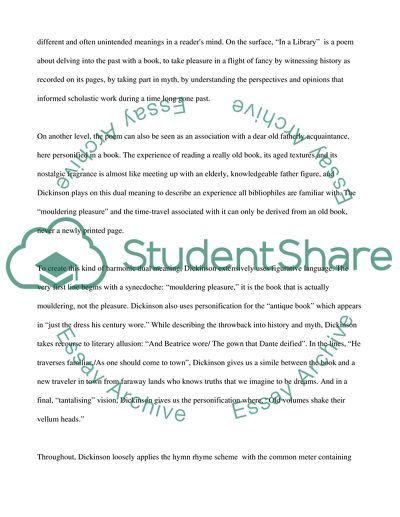Emily Dickinson's In A Library Essay Example | Topics and Well Written Essays - 500 words. Retrieved from https://studentshare.org/miscellaneous/1540107-emily-dickinsons-in-a-library
Emily Dickinson'S In A Library Essay Example | Topics and Well Written Essays - 500 Words. https://studentshare.org/miscellaneous/1540107-emily-dickinsons-in-a-library.


